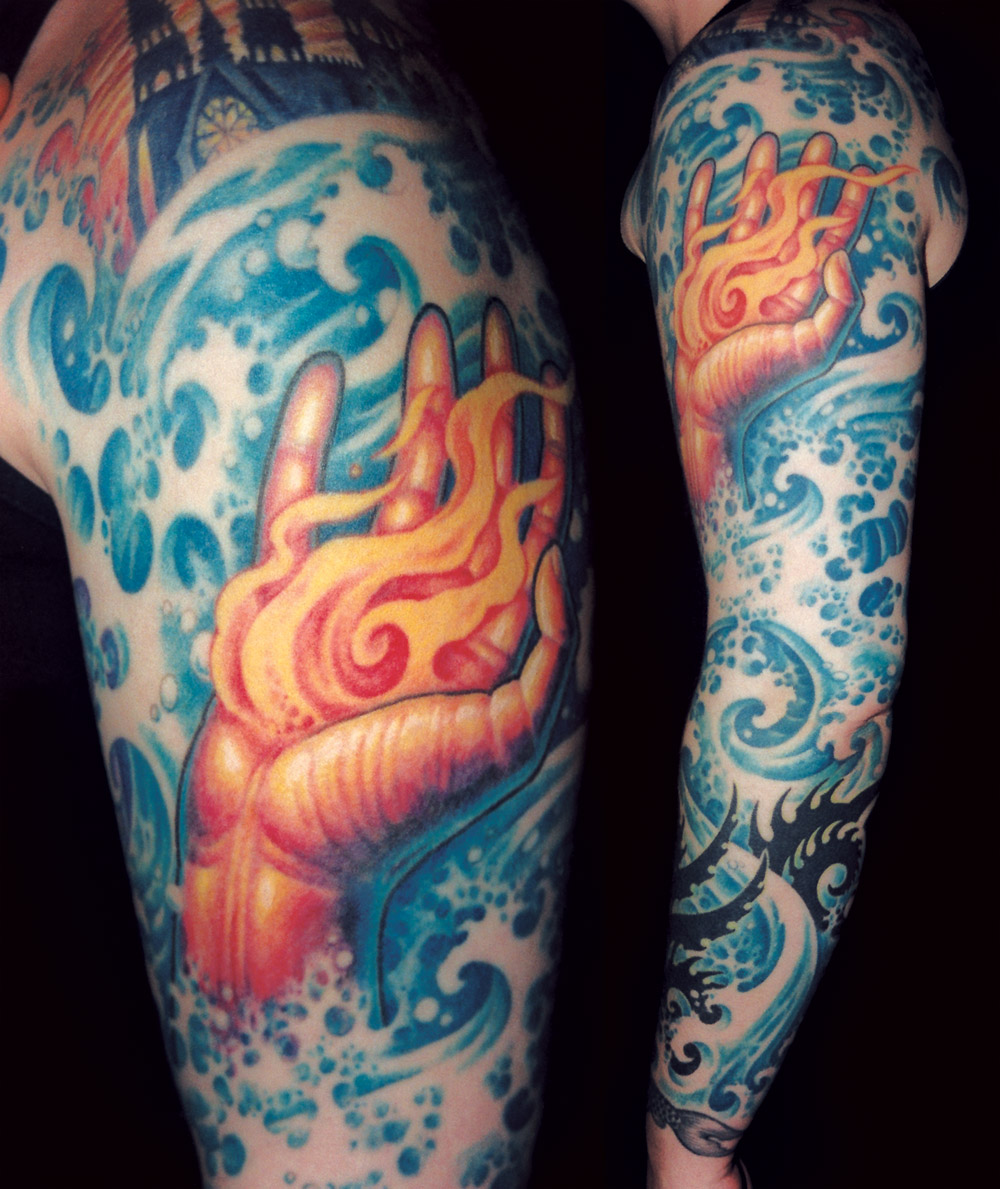In Fig. 11a is a whole-arm design. A sleeve is always an exciting opportunity for a tattooist; it's less common to get such a request from a female client, although heavily tattooed women are becoming much more common. I find that the feminine form can call for a lighter overall look; to provide this light and open quality, plenty of open skin was left in the water to keep the tattoo from becoming too heavy. The water was used as an opportunity for flow, and cascades up and down the natural curves of the arm. It also serves as a unifying element to tie together the rest of the tattoo's subjects. The remaining elements in the design are brightly colored; if we had left areas of open skin in the hand and flames along with all the open skin in the water, the piece would have appeared underworked and insubstantial. Although the client already had a couple small tattoos on her forearm, we were able to incorporate them into the overall design in such a way that the entire arm still appears as one piece.

Join the discussion in the forum.